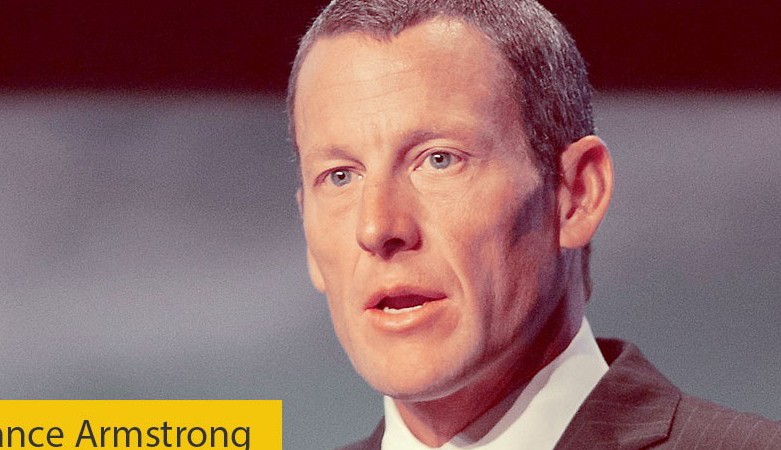Written by Luis Gallardo
LIVESTRONG was one of the most popular and profitable nonprofit brands in the 1990s and 2000s. Lance Armstrong, the company’s founder, was world-renowned and well-loved. From its name to its yellow visual identity to its purpose and goals, the company was built by and for Armstrong. But when he was stripped of his titles in 2012, all of that changed.
The company spiraled into a haze of negative publicity with a living founder facing major credibility and reputational issues.
This year, LIVESTRONG welcomes Chandini Portteus as its new CEO. But her entrance also begs the question: How does a new CEO step in and overcome the adversity that rocked its founder and scattered its advocates to the wind? How can a once-golden organization rebrand itself and reclaim its audience?
In Portteus’ case, and in the case of any brand that needs to overcome a PR disaster, the future of the company depends on recreating a strong sense of purpose and belonging for its people, its relationships, and its brand.
SEPARATING COMPANY FROM CONTROVERSY
Some companies have successfully reenergized and refocused their organizations with the help of new leadership. But it doesn’t happen by accident; it takes strategy, passion, and commitment. From a company’s perspective, there are three important things that must be done on the path of brand reconstruction:
1. Put the right people in place.
Selecting the right CEO is key to repositioning andrebranding an institution. It falls to the board of directors to gather the right evaluative criteria and secure the best possible leadership for the situation.In LIVESTRONG’s case, the board has decided that Portteus is the right CEO for the organization. She brings a youthful energy to the company and has extensive experience in the cancer space as former CEO of Susan G. Komen. Companies seeking to recover from a downturn need to complete the selection process after carefully evaluating the needs of the company and its customers.
2. Redefine strategic relationships.
Once a CEO is in place, she should have a knack for quickly and deeply understanding a company’s organizational structure and plotting out a course for change. This will often include strategic alliances and partnerships that set the company on a new path — such as when Puig, a fashion and fragrance group, celebrated its 100th anniversary by collaborating with woodworking artists and architects to create unique experiences for its customers.Portteus is hard at work separating LIVESTRONG from its past controversy by bringing the public eye to LIVESTRONG’s new authenticity and unique purpose. Her first move? A 10-year, $50 million partnership with the University of Texas at Austin to live out LIVESTRONG’s renewed focus on cancer.
3. Change the brand — and the color.
Unfortunately, the LIVESTRONG yellow branding is inseparable from its founder. And because the founder is out for a reason, the brand will eventually need to embrace a new brand identity. The steps along this path will require Portteus to engage with all key stakeholders — fromemployees to donors and beneficiaries to partners — to develop a change management strategy that rebuilds the whole institution.Portteus’ process will carry similar challenges to CEO Steve Easterbrook’s rebranding of McDonald’s. Where McDonald’s once prided itself on providing cheap fast food, dwindling sales have forced the company to make a progressive change. To regain customer trust, Easterbrook plans to revamp the chain’s image by removing red tape, improving food quality, and increasing the company’s franchising efforts. But his efforts have been met with a healthy dose of skepticism.By the end of their terms, both Portteus and Easterbrook will be solely responsible for inspiring long-term, high-risk branding changes in their organizations.
EMPOWERING CEOS TO TAKE ACTION
Once a company appoints a new CEO, it needs to step back and let that person take over. The new CEO is accountable for filling out her own effective team, brainstorming the right relationships to pursue, and guiding the new brand formation.
And it’s the CEO’s job to live out the company’s new purpose in a way that engages the champions of the future organization, replacing past adversity with a renewed sense of hope.
This kind of commitment doesn’t come without risk or sacrifice. Just ask Burberry’sAngela Ahrendts, who has led the company through closures, layoffs, and leadership changes over the past seven years as she realigned the company with its iconic trench coat and outerwear line. Fully embracing her leadership role, Ahrendts was able to navigate the company through that lack of focus and into a healthier bottom line.
CEOs seeking to pull off this massive shift must become fully aware of their surroundings. They need to analyze their own strengths and weaknesses as well as those of the organization and established processes. Otherwise, they run the risk of making cultural mistakes. Ignoring situational and environmental warning signs can be a significant barrier to success.
Is it too late for LIVESTRONG? Definitely not. And if a brand as badly damaged as LIVESTRONG can find a way to rebuild and rebrand, the rest are out of excuses. Placing the right leadership in power, calling attention to a new vision, and securing strategic partnerships can help any company beat overwhelming odds.
Was published in CEO World Magazine.

